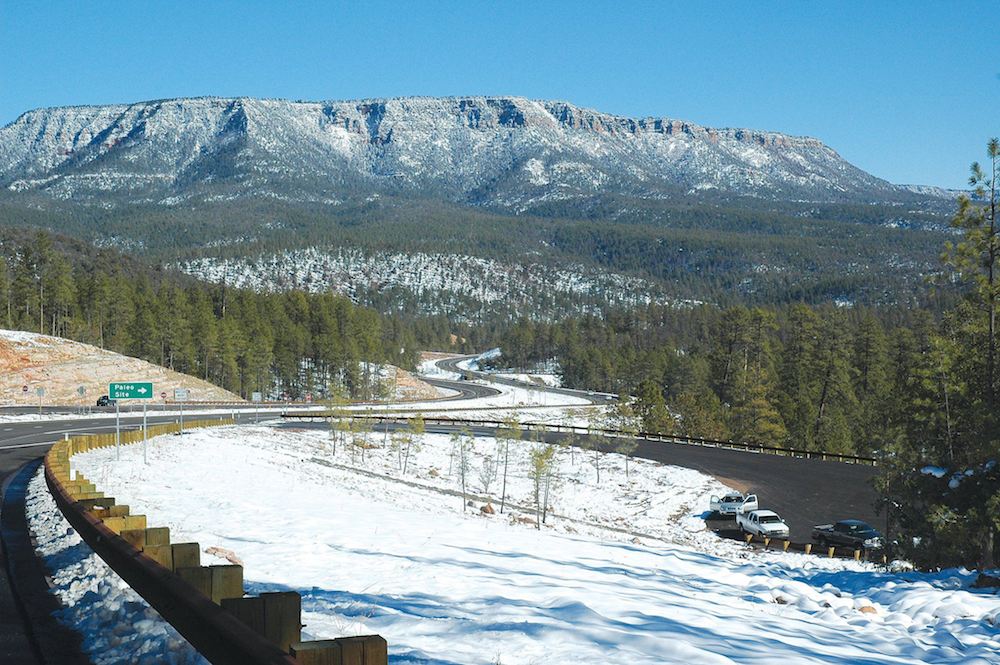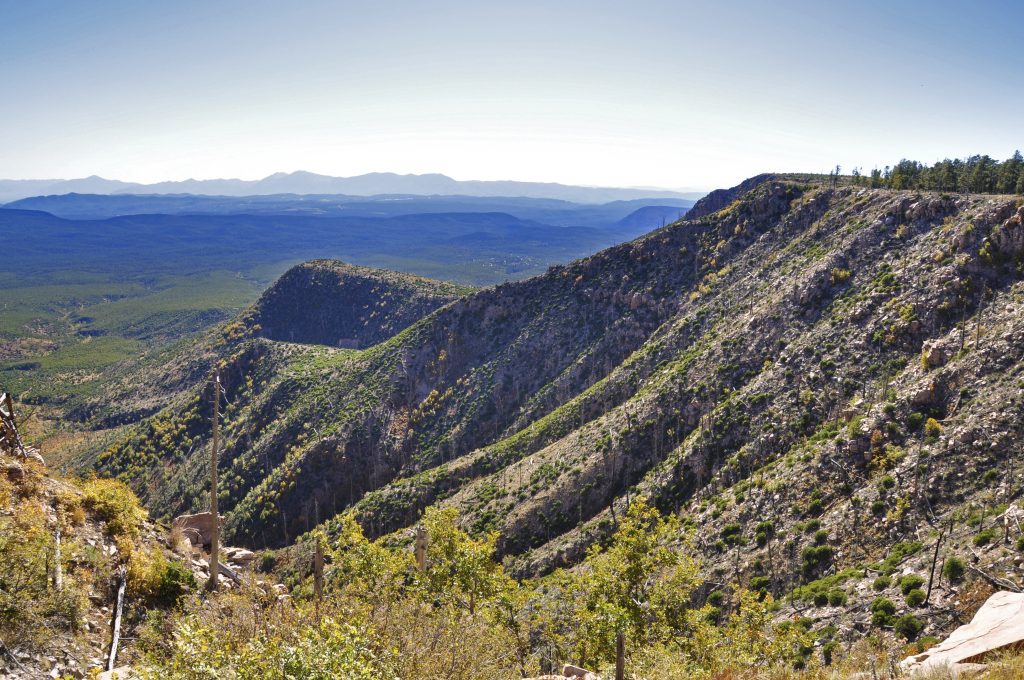The Mogollon Rim (pronounced “muggy-own”) is an extensive rocky cliff that runs 200 miles diagonally across Arizona. The powerful forces of erosion and faulting over thousands of years shape and mold this sheer cliff that represents the Southern portion of the Colorado Plateau. The high elevation provides a fantastic opportunity for breath-taking views over hundreds of miles to the east, south and west.
The rim starts southwest of Flagstaff and travels through three National Forests all the way to the Arizona and New Mexico border. Every year, the rim gets 18-26 inches of precipitation, mostly falling as snow during the winter. Snow falling in these areas represent an important water resource that is frequently measured and referred to as snow pack. Healthy Ponderosa pine forests and Aspen groves that blanket the rim help to retain the snow pack. When it begins to melt in late winter and early spring, the forests help to filter sediment from the runoff. The snowmelt feeds headwater streams that flow further downstream into the Salt and Verde rivers, filling major reservoirs where water is stored.

For many Arizonans, the area provides excellent outdoor recreational opportunities, especially for those looking to escape the summer heat in the low desert. While winter visits can be tricky due to winter weather and potential road closures, the area continues to be a popular destination year round. Are you ready for your wilderness adventure in Arizona’s high country?
To learn more about this magnificent geological formation, and plan a scenic drive along the rim, visit the U.S. Forest Service official page.
This photo by Randy R. is just one of over 1,000 submittals for our Fall 2013 Celebrate AZ Water Photo Contest. It provided a stunning opportunity to celebrate the importance and wonder of water in Arizona and to reflect on one of our region’s most precious resources.


